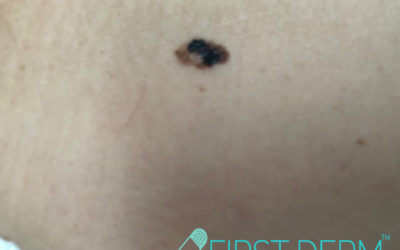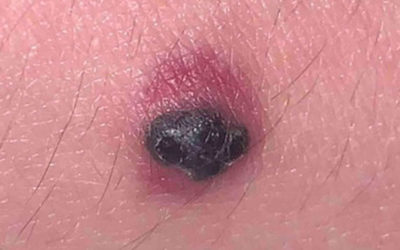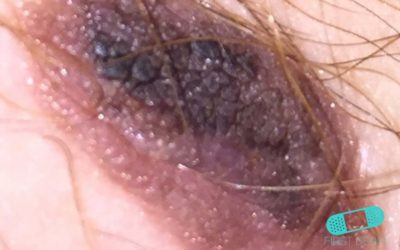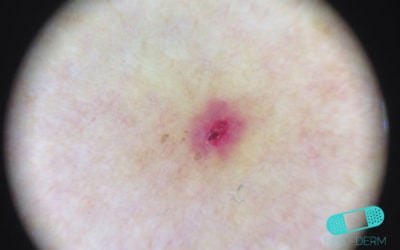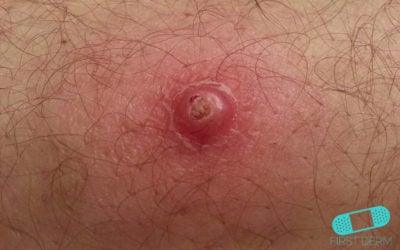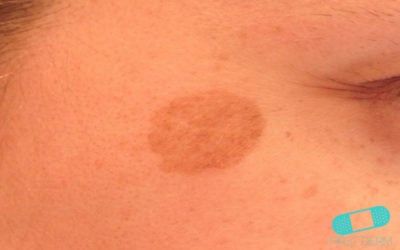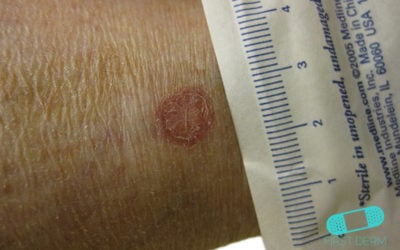Skin Cancer
Skin cancer is the most common cancer in the United States. Fortunately, the majority of skin cancer cases are treatable when caught and managed early. Thus, early detection is crucial in the fight against this disease.
Skin cancer can affect anyone, regardless of skin color. The majority of diagnosed skin cancers are Non-Melanoma Skin Cancer (NMSCs).
Melanoma Skin Cancer
Melanoma is the most serious type of skin cancer, arising from the pigment-producing cells in the skin. It can suddenly emerge without any warning signs or evolve from an existing mole. Understanding its early signs and available treatments is key to effective management.
Malignant Melanoma
Malignant melanoma is the deadliest form of skin cancer, as it has the potential to spread to other parts of the body. This form of cancer in skin pigment cells is often caused by the sun’s ultraviolet ray.
Melanoma Pictures and Malignant Tumor of The Skin
Malignant melanoma is the most serious form of skin cancer and the cancer form that increases the most among humans. It is strongly related to sun UV rays and repeated sun-burns. If detected early and treated early, 95% survive the disease. Therefore early detection is important.
Nodular melanoma
Nodular melanoma is an invasive form of melanoma which accounts for roughly one fourth of diagnosed melanomas. It is characterized by being faster developing, meaning it quickly grows downwards into the deeper layers of skin.
Non-Melanoma Skin Cancer
Non-melanoma skin cancer (NMSC), primarily including basal cell carcinoma and squamous cell carcinoma, arises in the skin’s outer layers. These cancers are typically less aggressive than melanoma and highly treatable when caught early, often appearing on sun-exposed skin.
Non-melanoma skin cancer: Symptoms, Causes & Treatments
Explore Non-Melanoma Skin Cancer types, symptoms, and the importance of early detection for effective treatment. Stay informed about NMSC risks
Non-melanoma skin cancer killing more people than melanoma, new study finds
Non-melanoma skin cancer now surpasses melanoma in global fatalities, reveals a new study from EADV Congress 2023. Dive into the insights, risks, and implications
Seborrheic Keratosis (Senile warts)
Seborrheic keratosis, also called senile warts, is a very common skin condition marked by light brown, tan brown, dark brown, black and variably pigmented spots. The warts are slightly raised with a clear edge and waxy.
Ulcer
An ulcer is a skin sore that appears red and is filled with pus upon infection. It can be triggered by excessive heat or cold, skin irritation, or problems with blood circulation.
Keratoacanthoma
A keratoacanthoma is a skin tumor caused by overexposure to the sun in older adults.
Lentigo Solaris (Liver Spots)
Lentigo solaris, or liver spots, are brown pigmented spots on the skin caused by natural or artificial ultraviolet (UV) rays.
Basal cell carcinoma (Basalioma, BCC)
Basal cell carcinoma is the most common type of skin cancer. More than two million cases of this skin cancer are diagnosed in the United States each year.
Porokeratosis
Porokeratosis is a skin condition involving lesions with thin center surrounded by raised ridges. Ask a dermatologist today!
Squamous Cell Carcinoma
Squamous cell carcinoma (SCC) is the second most common form of skin cancer after basal cell carcinoma. About 700,000 new cases of this skin cancer are diagnosed in the United States each year.
Sun Damaged Skin
Sun damaged skin has uneven levels of melanin, leading to premature skin aging, irregular skin pigmentation and irregular brown spots. Liver spots may also occur later in the life of adults who were overly exposed to the sun.
Squamous cell carcinoma (SCC) – pictures – cancer photos
Squamous cell carcinoma (SCC) is a form of skin cancer that is usually due to the fact that you have had too much sun exposure, even if you have not burnt yourself. Squamous cell carcinoma is becoming more common, most people who get it are cured after treatment.
Basal cell carcinoma – basalioma – pictures – cancer photos
Basal cell carcinoma is also called basalioma. It is the most common type of skin cancer that is usually due to sun exposure. Basal cell carcinoma rarely spreads to other organs, unlike other skin cancers.
Early Detection of Skin Cancer
Early detection is key for treating the two most common skin cancers, basal cell and squamous cell carcinomas, effectively.
For melanoma, detecting and treating it before it spreads to the lymph nodes results in a 99% five-year survival rate. This rate drops to 68% if it spreads to nearby lymph nodes and to 30% if it reaches distant lymph nodes or other organs.
Spot the Cancer You Can See When It’s Easiest to Treat!
Self-Examination Guide
Cancerous moles should be easy to spot, right? 25% of melanomas arise from an existing mole. The majority of melanomas are from new moles.
Unfortunately, new moles are often overlooked, and ones that you’ve had your whole life can change without you realizing it.
Can you spot the cancerous mole?
Moles are extremely common. Some people are born with them and others can develop moles later in life due to hormonal changes like puberty or pregnancy. Unfortunately, new moles are often overlooked, and ones that you’ve had your whole life can change without you realizing it. And change is a major indicator of skin cancer.
Additional Content
Online skin cancer screening: Triage tool for the early detection of skin cancers
Using First Derm for the early detection of skin cancers can significantly enhance your chances of a successful treatment
Online skin cancer screening: How it works and what to expect
Learn how online skin cancer screening works and why it is important for early diagnosis and treatment. Find out the benefits and limitations of online platforms and what to expect from the results
Vitamin D supplements and reduced skin cancer risk
New research suggests that use of Vitamin D supplements may reduce the risk of skin cancer. Learn more here.
Sunscreen: The Ultimate Guide
The ultimate guide to all things sunscreen. Why use sunscreen? What type is best? How do you apply it and when? All the details here!
Skin Cancer Pictures, Photos & typical cases
The three most common forms of skin cancer are malignant melanoma, squamous cell carcinoma and basal cell carcinoma. All three can be caused by the sun’s ultraviolet rays that damage the skin’s cells so that they begin to divide uncontrollably.
